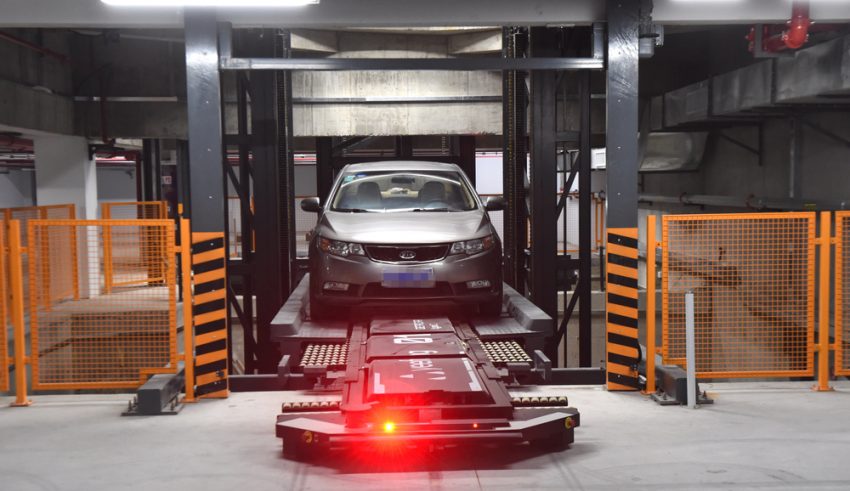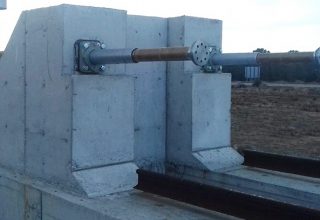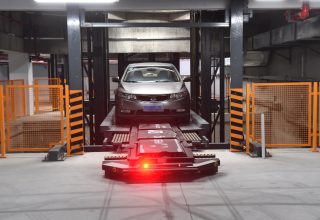
There is a new concept that is breaking through in the parking systems of large cities. Have you ever heard the phrase “robotic parking”?
It is a form of intelligent parking with the purpose of reducing maneuvers and minimizing space in each garage. This revolutionary parking system arises to solve problems, especially in small buildings that do not have enough space to park a large number of vehicles.
How robotic parking works
Currently there are several automated parking systems, from simple ones with installed lifting platforms, to more modern ones, which are fully robotic.
In these parkings, vehicles are transported on pallets or platforms that move them vertically (up and down) until they are placed on a type of metal or concrete racking/shelves. The cars are moved by machines that do not require onsite personnel, but are rather operated by a robot that gives them orders.
The car user comfortably leaves his/her vehicle inside a cabin, and then the machine is responsible for taking the car to a parking space and leaving it parked in the parking garage. Access to the storage area is prohibited and can only be accessed by authorized personnel.
The vehicles, meanwhile, are stored on these rackings/shelves, safe from theft or vandalism, which can occur when parked out on the street.
Advantages of smart parking
Thanks to the construction of these robotic parking spaces, there is a greater optimization of space and costs, if we compare it with traditional parking garages, as are most airport parking garages. We will list the most outstanding:
- From a civil works perspective, there is a significant reduction in costs. The construction of ramps for vehicle access or street leveling is not necessary. Neither is the need to build elevators to transport users. Less space is set aside for parking and volume and area are optimized.
- Lower investment in facilities. Large ventilation systems are unnecessary, since vehicles do not circulate inside the parking lot. In addition, cleaning, painting and maintenance expenses are reduced, as people do not walk through.
- Greater comfort for users. The control booths are in charge of moving the vehicle and parking it in the appropriate space.
- Environmental advantages. On one hand, as the vehicle is moved to its place, the engine is off, which reduces polluting emissions and saves energy because it does not circulate inside, seeking a space. On the other hand, there is a reduction in the number of vehicles parked on public roads, which also lowers CO2 emissions.
- Greater security. The restricted access of people, prevents theft and vandalism, as occurs in other types of parking.
- Save time in parking. This robotic system is designed to save the maximum amount of time upon entrance and exit of the vehicle and with parking.
- Easy adaptation. This system can be easily adapted to buildings that are already built and which, due to lack of space, have run out of parking spaces. The current urban planning regulations require this condition.










